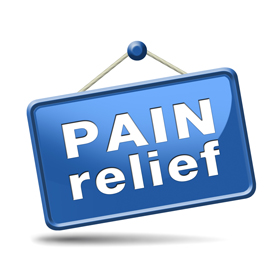
Chronic pain explained: It’s a pervasive condition affecting millions worldwide, impacting daily life in significant ways. This in-depth article explores the complexities of chronic pain, providing actionable insights into finding relief and enhancing your quality of life. We’ll delve into understanding the causes and symptoms, determineing effective treatment approaches, and exploring strategies for managing the impact on your daily life. The structure follows a logical flow, beginning with the fundamentals and progressing to advanced strategies for pain management. We’ll examine lifestyle changes, therapies, and medical interventions, ultimately empowering you with knowledge to take control of your condition.
Understanding Chronic Pain: A thorough Overview
Defining Chronic Pain
Chronic pain is defined as pain that persists for more than three months, often exceeding the typical healing period of an injury or illness. It’s a complex and multifaceted experience, going beyond just physical discomfort to encompass emotional and psychological factors. Unlike acute pain, which serves as a warning signal, chronic pain often lacks a clear cause or trigger. This creates challenges in diagnosis and treatment. Chronic pain can scope from mild discomfort to debilitating agony, drastically affecting an individual’s ability to perform daily tasks, engage in social activities, and maintain overall well-being. For instance, consider individuals suffering from conditions like fibromyalgia, neuropathic pain, or lower back pain—all of which can lead to long-term and significant chronic pain.
determineing the Underlying Causes
Investigating Potential Triggers
Numerous factors can contribute to the development of chronic pain. These scope from physical injuries to underlying medical conditions. Trauma, such as accidents or injuries, can lead to chronic pain. Moreover, certain medical conditions, such as arthritis, cancer, or nerve damage, may also play a function. Genetic predispositions, psychological factors like stress and anxiety, and lifestyle choices can also significantly impact an individual’s susceptibility to chronic pain. Furthermore, inflammation in the body can be a contributing factor in many chronic pain conditions. For example, consider inflammatory conditions like rheumatoid arthritis, where chronic inflammation contributes significantly to the pain experience. Studies have shown a strong correlation between stress and the exacerbation of chronic pain.
Effective Treatment Approaches
Exploring Various Options
Effective chronic pain management often requires a multidisciplinary approach. This means considering various treatment options, including medication, physical therapy, and lifestyle adjustments. Over-the-counter pain relievers can offer initial pain relief. However, more severe cases may require prescription medication. Physical therapy plays a pivotal function in restoring function and improving mobility. It helps strengthen supporting muscles, improve posture, and correct any muscle imbalances. Furthermore, psychological therapies, such as cognitive behavioral therapy (CBT), can help manage the emotional and psychological impact of chronic pain. CBT can assist individuals in determineing and challenging negative thought patterns related to pain.
Lifestyle Modifications for Chronic Pain
Practical Changes for Improved Well-being
Adopting healthy lifestyle changes can significantly reduce the severity and impact of chronic pain. Maintaining a balanced diet rich in nutritious foods can significantly improve overall health and well-being, which can in turn lessen the severity of chronic pain. Regular exercise is crucial for maintaining physical fitness and reducing muscle tension. In addition, stress management techniques, such as mindfulness or yoga, can help regulate emotions and improve overall coping strategies. Also, getting sufficient sleep can contribute to overall health and reduce the intensity of pain symptoms.
Related Post : The Illusion of Escape: Confronting Personal Issues Through Medicine
Complementary and Alternative Therapies
Exploring Holistic Approaches
Complementary and alternative therapies offer diverse approaches to manage chronic pain. These therapies can offer alternative pain relief or contribute to overall well-being. For example, acupuncture, massage therapy, and herbal remedies are often explored by individuals seeking additional methods to alleviate pain. The efficacy of these therapies can vary from person to person, and they are not a substitute for conventional medical care. It’s crucial to consult a healthcare professional before incorporating any alternative therapies into your treatment plan. Some examples of alternative methods include biofeedback, which offers individuals with real-time information about their body functions, empowering them to make conscious choices and adapt their responses to their symptoms.
In conclusion, understanding chronic pain is a multifaceted journey demanding a holistic approach. Finding relief and improving quality of life requires exploring various treatment options, including medication, therapy, lifestyle modifications, and alternative approaches. Remember, seeking professional medical advice is crucial in managing chronic pain effectively. By implementing the strategies outlined in this article, you can take proactive steps toward alleviating pain and reclaiming your well-being. Consult a healthcare professional for a personalized treatment plan tailored to your specific needs and circumstances.